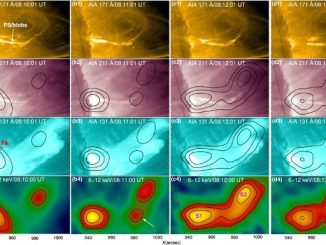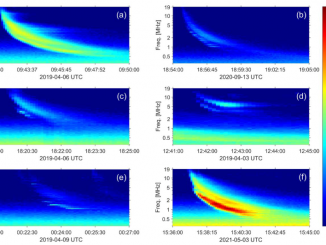ALMA Observations of Solar Spicules in a Coronal Hole by T. S. Bastian et al.
Solar spicules were discovered by the Jesuit priest Angelo Secchi in 1877. They are small plasma jets of a few hundred kilometers in diameter that are launched to heights >10 Mm with speeds ranging from a few 10s of km/s to >100 km/s. Individually they have lifetimes of a few minutes. They occur in the chromospheric network over the entirety of the Sun. Early estimates (Beckers 1972) suggested that spicules […]








